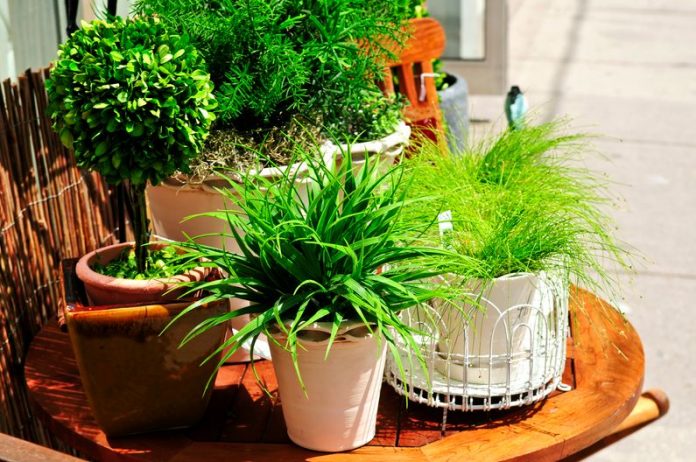Transplanting is one of the easiest, yet most feared, aspects of growing houseplants.
All you really need to do is remember a few basic rules and your houseplant will most likely survive and in fact thrive in its new home.
Most plants like to be cozy in their pots, so don’t transplant unless it’s necessary – you know that the plant has outgrown its pot, it hasn’t grown for a few years, has had a mealybug infestation and recovered, or is just going into a new pot that matches your home decor better.
The best indicator that a plant has outgrown its home is the sight of roots growing out of the bottom of the pot.
If your pot has no drainage holes for the roots to grow out of, you may have to turn the plant over and gently tap the pot against a counter or sink and the plant should slide right out.
If you see overcrowded roots – lots of roots and very little dirt – it’s time to replant that baby into a larger pot.
Get a larger pot
The first step is to get a larger pot, one that is about two inches wider in diameter than the present pot. It’s important not to put the plant into a pot that is too large.
Plants like to feel safe and cozy in their pots, one that is too large can cause the roots to spread out and fall apart, while the foliage remains very small and may wither and die.
Drainage is crucial to plant health
Make sure the new pot has drainage holes. You may need to drill some if the container is metal or use a nail and a hammer to punch holes if the pot is plastic.
If you cannot make any drainage holes in the pot – it’s made of porcelain or something similar – you will need to fill up the container at least one-fourth of the way with broken clay pot chips and charcoal.
This will absorb and evaporate water so your plant won’t get root rot. For pots with drainage holes, all you need to do is place some clay pot chips or pebbles on the bottom of the pot. This keeps the water from draining out too fast and drying out your plants too quickly.
Add fresh potting soil to the new pot
After you’ve prepared your new pot, put in about one inch of fresh potting soil. In any case, all-purpose potting soil is good for most houseplants.
Take your plant and gently loosen the dirt around the roots of the plant
Don’t be too timid when doing this, and work quickly so that you aren’t exposing the roots to the air any longer than necessary.
By spreading the roots, you are giving them a head start in their new growth pattern. The quicker the roots grow, the quicker they will give energy to the houseplant.
Put into the new container
Now put the plant into the new container, adding or subtracting dirt to keep the plant at an attractive container height.
Fill the pot with the soil
Now fill the pot with fresh potting soil all around the plant, firmly packing it down until it’s all about level close to a one-half inch below the top of the pot.
Water thoroughly
Water the plant thoroughly with warmish water, allowing the water to drain through at least twice, this makes sure the roots get a good soaking.
Place your plant in a nice sunny location
For a day or two the plant may look a bit droopy due to transplant shock, but keeping it in a location that suits its needs should have it looking better than ever in a couple of days.
If you feel that your plant is not recovering from the transplanting, you may want to go to your local nursery and purchase some root-toner and conditioner and apply as directed.
Conclusion
Your newly transplanted houseplants should grow and thrive in their new conditions and you will feel proud of your new skills in taking care of your beloved plants.

